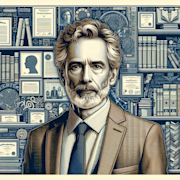Feminist Perspectives in Virginia Woolfs To the Lighthouse

Virginia Woolf’s novel To the Lighthouse is a masterpiece that delves into the complexities of gender roles and societal expectations during the early 20th century. Through her unique narrative style and profound character development, Woolf provides readers with an array of feminist perspectives. In this blog post, we will explore three key themes that showcase strong feminist undertones in Woolf’s work.
Section 1: Challenging Traditional Gender Roles
One of the most prominent feminist perspectives in To the Lighthouse is the challenge against traditional gender roles. Woolf portrays women who defy societal expectations and seek personal fulfillment beyond their domestic duties.
Subsection 1.1: Mrs. Ramsay - The Unfulfilled Woman
Mrs. Ramsay, the matriarch of the family, embraces her traditional role as a wife and mother. However, beneath her seemingly contented exterior lies a sense of unfulfillment. Woolf highlights Mrs. Ramsay’s desire for intellectual and creative pursuits, like her interest in philosophical ponderings and her ambition to write a novel. Through the character of Mrs. Ramsay, Woolf challenges the notion that women’s only purpose lies within the confines of the domestic sphere.
Subsection 1.2: Lily Briscoe - The Independent Artist
Lily Briscoe, a struggling artist, serves as another example of a woman breaking free from societal expectations. Lily battles the pressure to conform to traditional gender roles and instead pursues her artistic passion. She resists marriage and dedicates herself to her craft, rebelling against societal norms that dictate a woman’s worth lies solely in marriage and motherhood. Woolf uses Lily to highlight the importance of female autonomy and the pursuit of personal fulfillment.
Section 2: Female Subjectivity and Inner Lives
Woolf’s exploration of female subjectivity and inner lives is another way she presents feminist perspectives in To the Lighthouse. She challenges the idea that women lack complexity and depth by highlighting the rich internal thoughts and emotions of her female characters.
Subsection 2.1: Mrs. Ramsay - Inner Turmoil and Silent Desires
While Mrs. Ramsay is perceived as the nurturing and self-sacrificing wife and mother, Woolf uncovers her inner turmoil and unspoken desires. Through detailed descriptions of her thoughts, fears, and dreams, Woolf reveals the complexity of Mrs. Ramsay’s inner world. This subversion of expectations humanizes Mrs. Ramsay and showcases the depth of her character.
Subsection 2.2: Lily Briscoe - Art as Self-Expression
Lily Briscoe’s artistic process provides insight into her inner life. Woolf skillfully depicts Lily’s struggles, doubts, and creative breakthroughs, giving readers a glimpse into the mind of a female artist. By exploring Lily’s subjectivity, Woolf challenges the notion that women are merely passive objects in the narrative of life.
Section 3: The Male Gaze and Female Empowerment
Woolf addresses the issue of the male gaze and its impact on women’s lives, revealing a strong feminist perspective on female empowerment.
Subsection 3.1: Mrs. Ramsay - Objectified and Undervalued
Mrs. Ramsay experiences the effects of the male gaze throughout the novel. She is often reduced to her physical appearance and valued solely for her roles as wife and mother. Woolf sheds light on the implications of objectification, emphasizing the limitations it places on women’s identities and aspirations.
Subsection 3.2: Lily Briscoe - Defying the Male Gaze
Lily Briscoe resists the male gaze and asserts her autonomy as an artist. Through painting, Lily challenges the male-dominated artistic conventions of her time and redefines her worth on her own terms. This act of empowerment demonstrates Woolf’s belief in the ability of women to reclaim their identities despite societal pressures.
In conclusion, Virginia Woolf’s To the Lighthouse provides readers with profound feminist perspectives that challenge traditional gender roles, explore female subjectivity, and emphasize the need for female empowerment. By breaking away from societal expectations, Woolf’s characters inspire readers to question and challenge the limitations placed upon women, ultimately advocating for gender equality and personal fulfillment.

Johnathan Evans
Journalist
More From Classics Authority Books

Book
The Intersection of Science and Art: Mary Shelley's Frankenstein

Book
The Intricate Narratives of James Baldwin: From Go Tell It on the Mountain to Giovannis Room

Book
The Symbolic Allegory in George Orwells Animal Farm

Book
The Sorrows of Young Werther by Johann Wolfgang von Goethe

Book
The Sun Also Rises by Ernest Hemingway

Book
The Magic of Charles Dickens Great Expectations: A Story of Redemption





